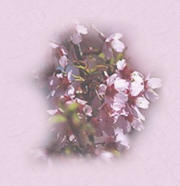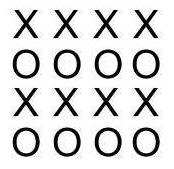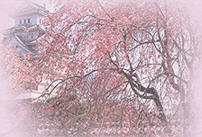Perception
This continues the theme of the last essay – there is a lot of unconscious processing in perception.
Visual Perception
There is a lot of basic processing in visual perception that is nowhere close to being conscious. For example, the information coming into each eye isn't the same. Your unconscious has to fuse these two pieces of information together. Meanwhile, it uses the discrepancy between the information in the two to calculate distance.
Then there's the problem that have a blind spot in each eye where the optic nerve leaves the retina. You cannot see anything in this blind spot. But there is no hole in your conscious visual experience. Instead, your unconscious fills in the missing information with a good guess of what is likely to be there.

For example, if there is a pencil passing through your blind spot, you will not consciously experience a hole in the pencil. Instead, your unconscious will fill in the information of a pencil and you will see a whole pencil. Of course, if there is a black smudge on the pencil and the smudge falls into the blind spot, your unconscious can't fill that in, it can only fill in what is likely to be there given the surrounding information.
When you move your eyes, the "picture" in each eye jerks to a completely different location in your retina. However, you do not consciously experience a jerking world, or even a moving world; consciously the world stays in place. In this case, your unconscious is using the information it has about your eye movement. If you gently push on your eyelid, your unconscious doesn't know how to compensate for that movement and you will consciously experience your world as moving.
Unconscious Organization
Another aspect of visual processing is organization. Consider this figure:

If these are all evenly spaced, most people will tend to see it as 4 rows. The reality is NOT four rows. The reality is that there are just 16 things. Your brain organizes this into four rows. If the objects were not evenly spaced, your brain would group the closest objects together. For example, your brain sees this as being 16 things but also as two groups.
a a a
a a a a a
a a a
a a a a a
Actually, the reality is that there aren't 16 "things" in either of these pictures. The reality is that some parts of the paper are darker than others, and your brain organizes those coherent dark spots into "things".
The point is, there is a whole lot of organizing going on before you ever become conscious of a picture. Furthermore, this organization is part of your conscious experience -- you don't just experience a visual image, you experience an organized visual image.
The Perception of Meaning
Ultimately, your conscious perception isn't just visual, or auditory, or any particular sensation. In addition to being organized, it also contains meaning. For example, if you see a cat, you recognize it as a cat, and your conscious experience includes 'cat'.
What part of the brain does the work of adding meaning to the sensory experience? By now the story should be familiar: your unconscious does the work. You don't say to yourself, "Hmm, splotch of black, long tail, moves quickly, it's probably a cat." Instead, your conscious experience is just "There's a cat."
I wanted to do an experiment testing if people were conscious of how they knew a picture was of a dog or a cat. In psychological terms, people use "cues" to distinguish cats and dogs. The question was whether people consciously knew which cues they used. First, I needed a list of cues that people actually used. I had no idea how I distinguished cats from dogs, so I studied pictures of cats and dogs for more than an hour, looking for differences. I found a few cues that seemed very reliable. One was the shape of the eyes, and another was the shape of the irises inside the eyes. Then I tested subjects, and I found that everyone (or almost everyone -- it is hard to tell the difference between these two in an experiment) used these cues to distinguish cats from dogs.

Then I asked my subjects to list the differences between cats and dogs. The most likely answer was "size", which actually isn't a very reliable cue, because there are some very small dogs and some very large cats (such as panthers). Another common answer was "whiskers". Cats are famous for their whiskers. But many dogs have whiskers, so this is not a very reliable cue. What is happening here is that people can acquire conscious knowledge about the cues they use for recognition. This conscious knowledge can even be accurate. Usually it is. But it is not always accurate, and even when it would be a good cue, people aren't necessarily using this cue. In this case, the conscious knowledge wasn't horribly wrong, it just wasn't that useful and certainly not as useful as the cues I had discovered.
About that time I asked a four-year-old how she could tell the difference between cats and dogs. She just said the whiskers. We checked and her dog had whiskers. It is not the case that you once consciously knew how to distinguish cats and dogs and just forgot. You NEVER knew the cues your unconscious was using. (And no one ever told you good cues to use to distinguish cats and dogs, because no one else knew them either.)
About half the people could report the cues I had found. This still leaves half of the people who used these cues but could not report them. You might think, maybe they knew the cues but were just forgetting them. Maybe. But if they forgot the cues when asked to list them, wouldn't they also forget the cues when they were trying to perceive a dog or cat? Remember, they essentially always use the cues.
I also asked my subjects to draw a picture of a cat head and a dog head. A few more subjects now included the cues about the eyes in their drawings. But not many more. So I still had about half the subjects who did not include the cues about eyes in their drawing, even though they were drawing eyes.
The point is, people use cues to perceive a cat or a dog. But these cues are used unconsciously. People do not have good conscious knowledge of how their unconscious perceives cats and dogs.
Problems Reporting Cues Used in Perception
This isn't just cats and dogs. It is almost everything. The noted educator John Holt talked about the difficulty of painting a lake, which led me to try to list the cues I use to perceive a lake in the distance. I thought 'blue or green' and 'flat', but lakes can be many different colors. I gave up on color when I was looking at water at sunset and it was orange, pink, and black. (The black came from the parts of the waves that were not reflecting the sky.) 'Flat' is a reasonable cue, but a lake is never perfectly flat and perfectly flat things don't look like lakes. I think that after about thirty years at this task I have some good ideas about the cues people might use to recognize a lake, but I just have a start to the real answer.

My graduate student from Tawain said that when she asked people to define anything, they didn't give good answers. The example she told me is that most people do not do a good job of defining wall. Mostly, their definition will fit a door or window. I sat with a subject for 45 minutes while she tried to define table. I had a system for helping her improve her definition, but it didn't succeed -- after 45 minutes, her definition also fit a chair. I regularly spend 45 minutes letting fifth graders try to define rectangle. They all know what a rectangle is, but they usually cannot define it. Bottle is another thing people have trouble defining; ironically, they are liable to forget the bottleneck in their definition. But these are all just examples -- I found that people could not do a good job of saying what cues they use to recognize almost anything.
Even experts have this problem. One famous study examined experts who could tell male chicks from female chicks. They could not say which cues they used. Another study found that doctors told their students one way of reading x-rays, then they themselves read the x-rays in a different way. And as Yeuh-Shiow Lee pointed out to me, one goal has been to take the knowledge of experts and build a computer system to contain and use that knowledge. The main problem is getting the information out of experts. And in a way, you are an expert on cats, tables, walls, bottles, and rectangles, and you can't say how you perceive them.
The point here? Probably the most important part of percption is perceiving meaning. It does us no good to know that something is brown with a flat top, or black with protruding cylindars that bend. Instead, we need to know that something is a table, or a cat. And this, the most important part of perception, is done unconsciously. Your consciousness would be horrible at perception, because for the most part you have poor conscious knowledge of the cues your unconscious uses.

A Very Simple Model
There is only one reasonable explanation of these facts about perception: A part of the brain does perceptual processing unconsciously, and only the outcome of the perceptual processing becomes conscious. You could picture that it like this.

I prefer to add another complexity to this. I like to think of each perceptual system as first doing its own processing. There is probably no learning in the early perceptual processing. Then, all of the sensory systems funnel into one unconscious system, which I call the Inferential System. The Inferential System produces the final perception, which is presents to consciousness. So this is my model:

